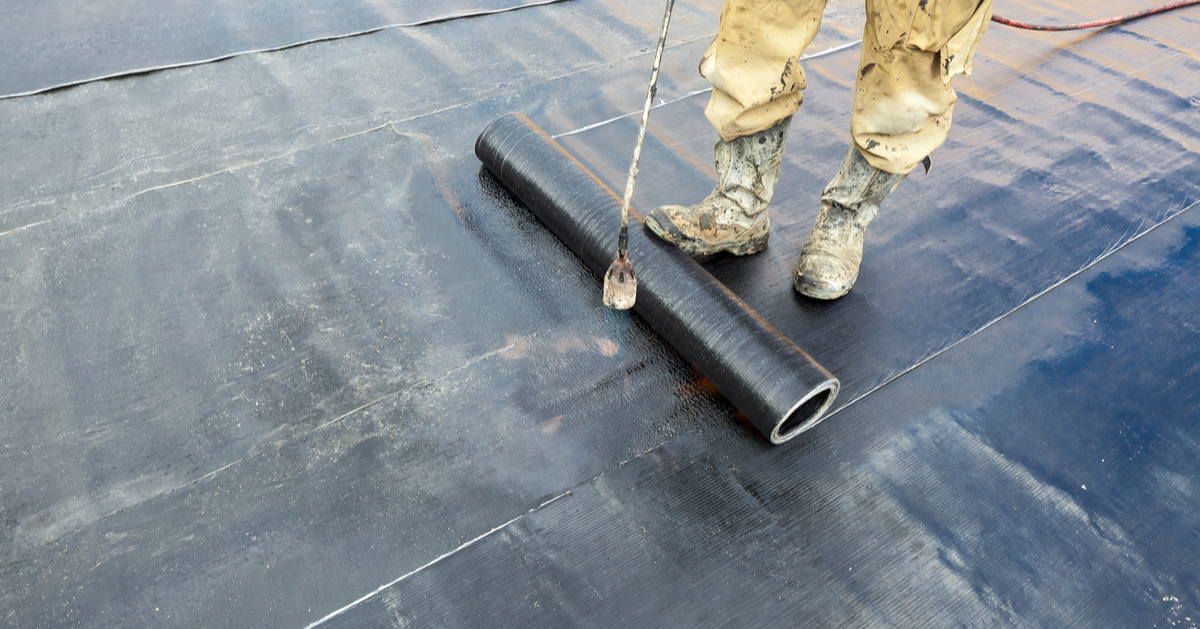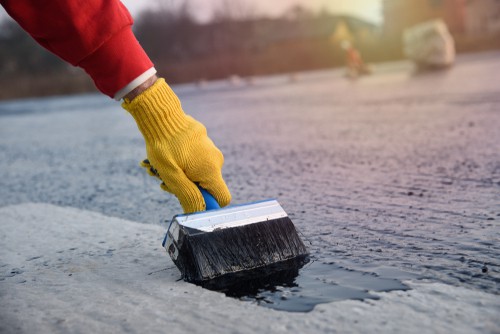What Makes Water Solutions Omaha a Top Choice for Homeowners
How Waterproofing Functions: A Thorough Check Out Strategies and Technologies
Waterproofing is crucial for protecting structures from moisture-related damage. It entails numerous methods and modern technologies that develop obstacles against water intrusion. Conventional methods, such as compressed clay, exist side-by-side with contemporary innovations like liquid-applied membrane layers. Understanding the nuances of these strategies is essential for reliable application. Nevertheless, the efficiency of any waterproofing remedy hinges not just on the strategies utilized yet additionally on continuous upkeep and assessment. What are the vital aspects that influence lasting performance?
Recognizing the Basics of Waterproofing
Waterproofing is a vital process that protects structures from water invasion, which can cause considerable damage gradually. This method entails the application of various materials and strategies developed to develop a barrier against wetness. The main goal is to avoid water from permeating surface areas, which can create degeneration, mold growth, and architectural instability.Various variables influence the choice of waterproofing technique, including the kind of framework, its location, and environmental problems. Comprehending the physics of water movement and the properties of various materials is important in selecting an effective waterproofing solution.Effective waterproofing not just safeguards structures but additionally improves their longevity and honesty. Usually, it is integrated into the design phase of building to guarantee thorough protection. As recognition of water-related concerns expands, the importance of recognizing waterproofing principles becomes progressively clear to architects, building contractors, and residential or commercial property proprietors alike.
Standard Waterproofing Approaches
Typical waterproofing approaches have actually been made use of for centuries, counting on reliable strategies and products to secure structures from water damage. One of the earliest approaches involves the use of clay, which, when compacted, develops an all-natural obstacle versus dampness. Additionally, asphalt, a sticky, black material stemmed from petroleum, has been used for its waterproof homes, frequently related to roofing systems and foundations.Another strategy involves the application of lime-based plasters, which give a breathable layer that allows wetness to escape while protecting against water ingress. Thatch roofing, a typical technique still seen in some cultures, supplies exceptional waterproofing because of its securely packed straw layers.Moreover, using rock and brick has projected, as these products are naturally resistant to water when effectively mounted. Generally, conventional waterproofing techniques emphasize the relevance of selecting suitable products and building methods to enhance sturdiness versus water invasion.
Modern Waterproofing Technologies
Innovations in contemporary waterproofing technologies have actually reinvented the way structures are secured from water damages. Innovative strategies such as liquid-applied membranes and innovative sealants have improved the efficiency and adaptability of waterproofing options. These innovations allow for smooth application, lowering the threat of leakages and ensuring thorough coverage over complex surfaces.Moreover, the integration of smart modern technologies, such as wetness sensors and automated tracking systems, makes it possible for real-time assessment of waterproofing performance. This positive strategy promotes timely maintenance and lowers long-lasting repair work costs.Additionally, innovations in spray-applied finishes provide quick application and exceptional adhesion, adjusting to numerous substrates while offering robust security. Methods like polymer-modified systems better boost adaptability and resilience, making them appropriate for diverse atmospheres. Overall, modern-day waterproofing innovations not only alleviate water invasion but also add to the durability and sustainability of structures, marking a significant change in the sector.
Materials Made Use Of in Waterproofing
The effectiveness of waterproofing solutions heavily relies upon the materials made use of in their application. Different products are utilized to develop obstacles versus water access, each with unique residential properties matched for various environments. Typically used products include membranes, coatings, and sealants.Liquid-applied membrane layers, frequently made from polyurethane or acrylic, form a seamless barrier that adapts to intricate surface areas. Sheet membranes, generally created from rubber or thermoplastic, deal longevity and are ideal for larger locations. Furthermore, cementitious waterproofing products, composed of cementitious substances, offer exceptional adhesion and flexibility.Sealants made from silicone or polyurethane are crucial for joints and seams, ensuring comprehensive defense. In addition, sophisticated materials, such as geo-composite membranes, incorporate several functions, improving efficiency. Overall, the choice of waterproofing materials is crucial in accomplishing durable and reliable water resistance, customized to specific job demands and environmental conditions.
Typical Applications of Waterproofing
Waterproofing plays a crucial duty in various fields, making sure the long life and stability of frameworks. Typical applications include property options that secure homes, industrial facilities that safeguards companies, and industrial settings that call for robust protection against wetness. Comprehending these applications highlights the value of waterproofing in keeping both security and capability across various settings.
Residential Waterproofing Solutions
Many home owners deal with obstacles with wetness breach, making effective domestic waterproofing services vital. Different approaches exist to resolve this concern, consisting of inside and outside waterproofing systems. Inside options usually involve the application of sealers and layers to basement wall surfaces, which assist avoid water seepage. Exterior approaches typically consist of the installment of drain systems and waterproof membranes that draw away water far from the foundation.Additionally, property owners may consider sump pumps to remove water build-up and dehumidifiers to regulate humidity levels. Appropriate grading and making use of rain gutters also play a crucial function in managing water flow around the home. By applying these techniques, home owners can substantially minimize the risk of water damages and mold and mildew growth, making sure a completely dry click for more info and secure living environment.

Commercial Infrastructure Security
Efficient waterproofing solutions play an important duty in the defense of commercial infrastructure. Water Solutions. These methods are crucial for safeguarding structures, auto parking frameworks, and bridges from water damages, which can jeopardize structural honesty and cause expensive repair services. Typical applications include the installation of membranes, finishes, and sealants that create obstacles against dampness seepage. Locations such as basements, roofings, and outside walls are commonly focused on to assure long life and sturdiness. In addition, waterproofing systems can enhance power performance by avoiding water-related issues that may lead to mold and mildew growth and deterioration. By applying durable waterproofing procedures, homeowner can protect their investments and maintain operational efficiency, inevitably adding to the total sustainability of business centers
Industrial Applications Overview
While numerous markets face special difficulties, the demand for trusted waterproofing options remains a continuous in industrial applications. Industries such as production, building and construction, and energy typically encounter environments where moisture direct exposure can jeopardize architectural stability and functional efficiency. In manufacturing centers, waterproofing is crucial for safeguarding equipment and materials from water damage. In building and construction, it safeguards structures and cellars against groundwater infiltration. The power field depends on waterproofing for the defense of devices click reference in hydroelectric plants and overseas frameworks. Additionally, food handling sectors utilize waterproofing to guarantee hygiene and compliance with safety and security standards. In general, reliable waterproofing remedies are necessary for improving resilience, safety, and productivity throughout different industrial setups.
Maintenance and Durability of Waterproofing Solutions
Waterproofing remedies are created to provide lasting protection versus moisture intrusion, routine maintenance is important to guarantee their effectiveness and long life. Regular evaluations play a substantial duty in identifying possible issues such as cracks, peeling, or signs of water damages. Resolving these troubles promptly can protect against more degeneration and pricey repairs.Additionally, cleaning the surface of waterproof areas aids remove dirt and particles that can compromise the honesty of the waterproofing obstacle. It's also suggested to reapply protective finishings or sealers as recommended by producers to keep ideal efficiency. Environmental elements, such as UV exposure and severe weather, can affect the life-span of waterproofing materials, making regular assessment vital
Frequently Asked Concerns
Can Waterproofing Be Applied in Cold Climate?
The concern of using waterproofing in chilly climate increases issues regarding bond and wet basement healing. Numerous products might not perform at their finest in reduced temperatures, requiring mindful option and factor to consider of details standards for effective application.
For How Long Does Waterproofing Generally Last?
The period of waterproofing effectiveness differs based on materials and ecological elements. Normally, it can last from five to 10 years, however normal upkeep and examinations are vital to guarantee peak performance and durability.
Is DIY Waterproofing Effective and Safe?
The effectiveness and security of DIY waterproofing rely on various factors, consisting of material top quality and application strategy. While some individuals accomplish acceptable results, others may encounter concerns that endanger lasting security and structural honesty.
What Are the Indications of Failing Waterproofing?
Signs of falling short waterproofing consist of noticeable water spots, peeling paint, mold development, mildewy odors, and dampness in walls or ceilings - Basement waterproofing Omaha. These indications suggest jeopardized obstacles, necessitating punctual examination and possible removal to stop more damages
Exactly how Do I Select the Right Waterproofing Specialist?
